At age 34, S/W alum Jacob Chase (Amy) can already look back on an illustrious career as a filmmaker, working within various storytelling formats and multiple positions in the film industry. He premiered his first low-budget feature film at Slamdance in 2010, but despite thinking “I’ve made it” at the time, it would be another seven years until he got his next “big break”, when Amblin Partners acquired the feature rights to his horror short Larry.
Having made numerous shorts, before and after that debut feature, Chase has also written several scripts on spec, as well as for hire, with screenplays for Amazon and The Jim Henson Company among others. In 2016, he won the Doritos “Crash the Super Bowl“ contest, which not only led to a broadcast of his commercial during Super Bowl 50, but also to a directing mentorship under Zack Snyder on the set of Justice League. The following year he sold a musical TV show to ABC.
While all these accomplishments are enviable achievements for any young filmmaker, Chase is only getting started. Ahead of the theatrical release of his horror film Come Play – just in time for Halloween – Jacob joined us to discuss how he turned his short film Larry into a feature, getting casting suggestions from Steven Spielberg, and what it took to make it in the studio system as a writer/director.
Hi Jacob, thank you for taking the time to talk to us about Come Play! Is it surreal, doing all these interviews for your first major theatrical release?
I mean it’s surreal for a lot of reasons, not least of which, because it’s in my house, in the middle of a pandemic. But yeah, having a movie come out in theaters across America and elsewhere, it’s wild. Just the idea that people can go buy tickets to something I made, is very cool.
Considering your previous work and going from Larry to the theatrical release of Come Play within three years, do you feel like this is the classic story of an overnight success…ten years in the making?
Yes. I’m glad you added the “ten years in the making”. I feel very lucky. It’s a huge accomplishment. I mean, there’s always luck involved in anything like this, but of course, I have been trying for well over a decade to get movies made, and working.
I was an editor for years and then I was a screenwriter for years, and I’m still a screenwriter. That’s how I make my living, but you know, you write stuff for studios and things get close to getting made, then they don’t. I had a TV show that was a few weeks from production before it got shut down. Things get very close and then they don’t happen, and it gets disheartening. But ultimately when these things happen, they still feel extremely special. Especially because you know how freaking hard it is to get anything made.
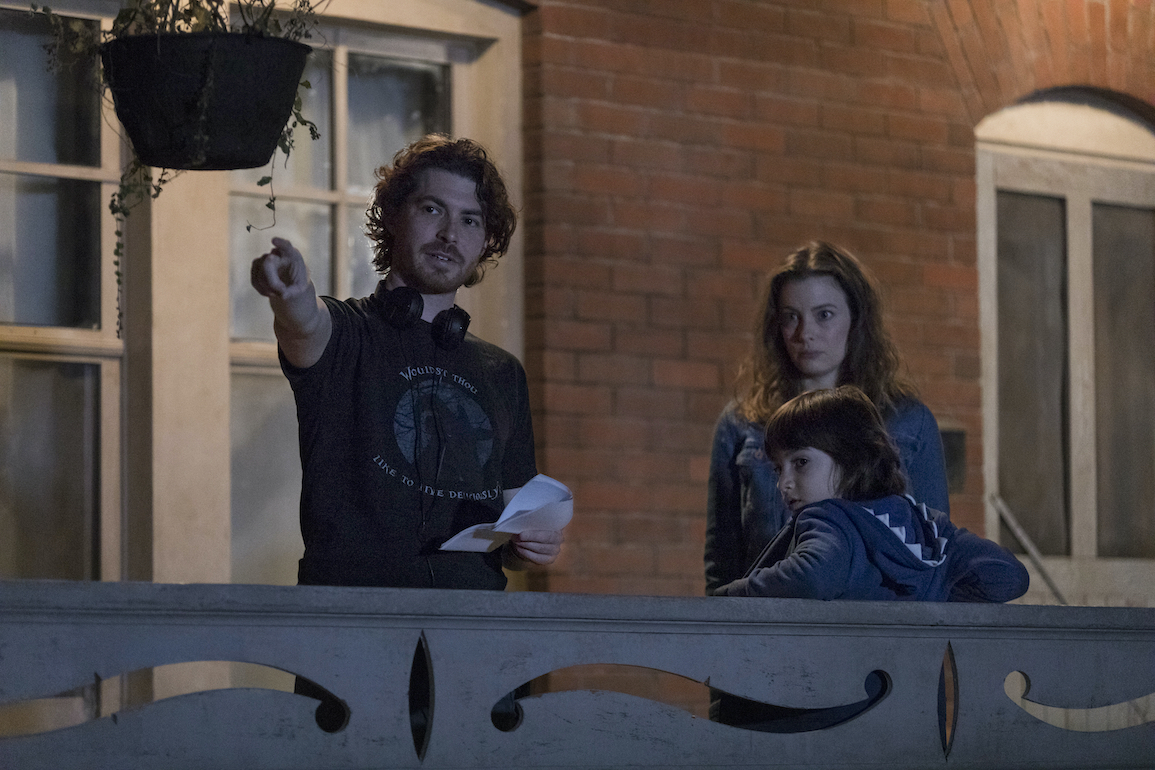
(L to R) Writer/director Jacob Chase, actor Gillian Jacobs and actor Azhy Robertson on the set of COME PLAY. Credit : Jasper Savage / Amblin Partners / Focus Features
I’m interested in your journey as a filmmaker. When you started out making shorts, what was your main aim? Was it to hone your skills, build up to a feature, or all of the above?
All of the above. I want to make movies. I’ve wanted to direct movies since I was a little kid. I started out as an actor when I was eight years old, first in musical theater and then film and television. That’s where I learned what filmmaking was, and where I fell in love with storytelling.
And so I’ve kind of been making short films from that age. Honestly, from very, very young, I would force my friends to come over and draw mustaches on them and make them be in my movies. I never stopped. I made short films through college, and then after college as well to just keep going. I go a little crazy if I’m not directing anything, because I’ve been editing and writing for so long.
“Larry was the short film that really made people take notice”
I love [editing and writing] too, but I want to be making stuff. So really it’s just a chance to keep honing my skills, keep showing people I know what I’m doing, that I can make a movie. I’ve made a number of shorts, but Larry was the short film that really made people take notice, and made people think I could do something bigger.
You went straight to Short of the Week with Larry, how did the online release help you in getting the feature off the ground?
Look, the honest answer is, I don’t know how much of an impact it being online had. I love Short of the Week, and the reason I had it released there is because I feel like there’s a certain level of quality that comes out of the content that you guys program, which I love. And I had a previous short film with you guys called Amy.
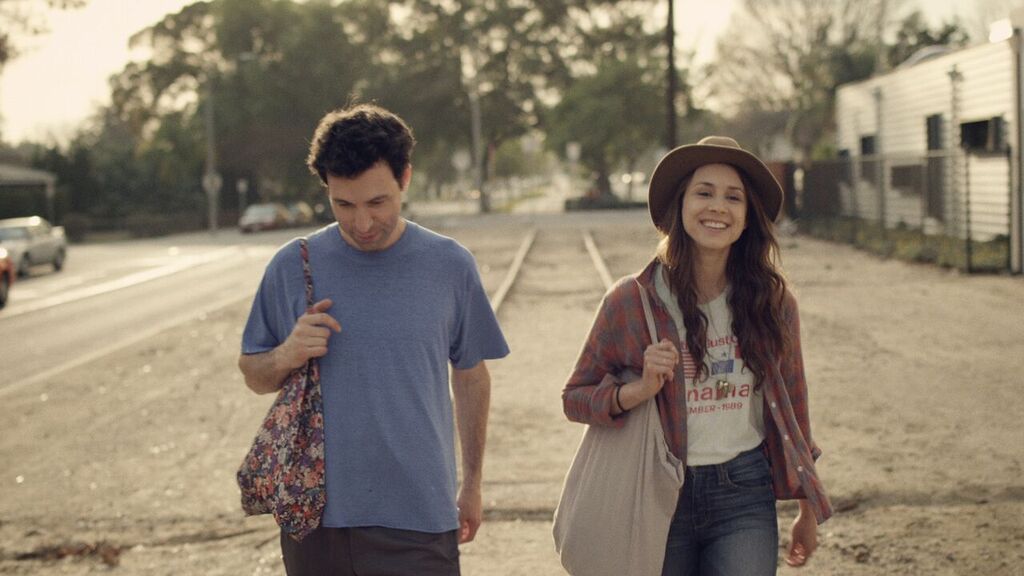
(L to R) Alex Karpovsky and Troian Bellisario in Chase’s 2015 short Amy
I think in this case, if I remember the timing correctly, I had already sold it by the time it came online. I shared it with my agents, my manager and together as a team, they sort of shared it through the industry with people I had already worked with, but also with people I hadn’t worked with before.
I hadn’t previously worked with Amblin for example, but when Amblin was one of the studios that raised their hand and said, “We are interested in this,” first of all, I had to figure out a feature really quick. Then when I met with the different studios, everyone sort of brought something interesting to the table, but with Amblin, you, of course, had Steven Spielberg, and they made so many movies I grew up with.
The kind of horror movie I wanted to make here was one that felt more in the vein of Poltergeist, or Jaws, or something that was a bit more on the compassionate, heartwarming family side. Of course it’s very scary and suspenseful, but it has a lot of heart and warmth to it. So Amblin was the perfect place to get to make this, I’m super fortunate.
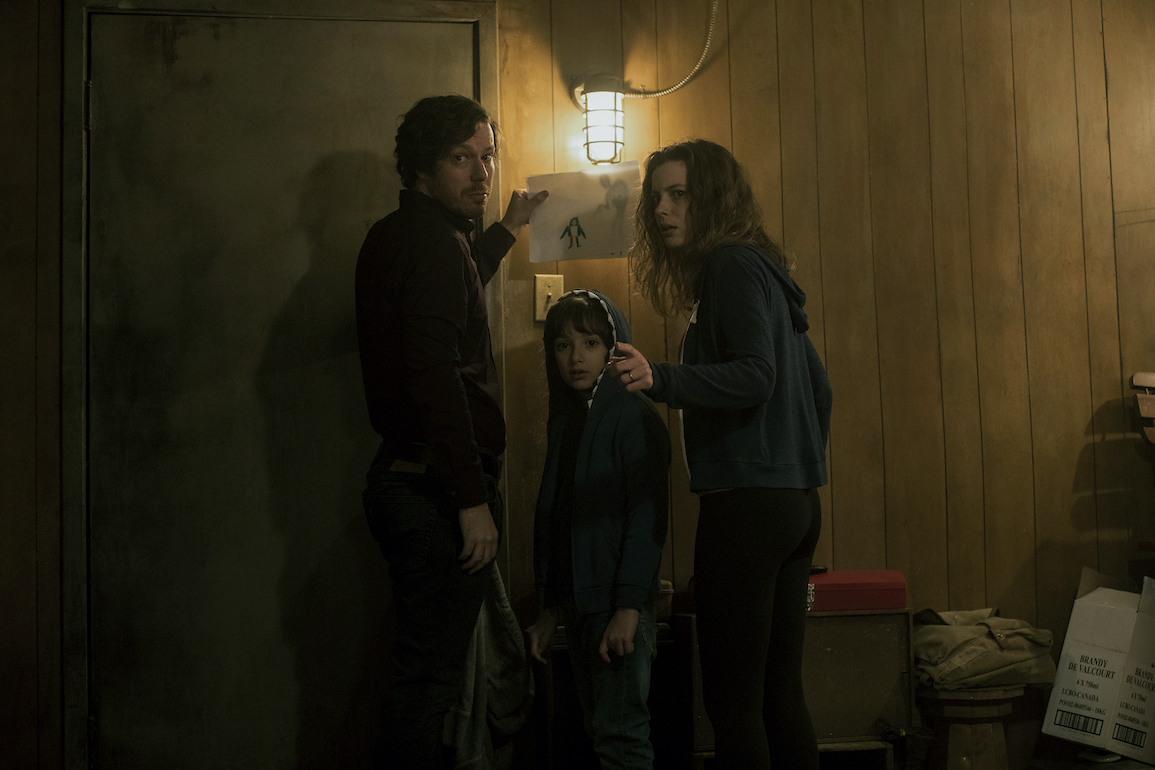
(L to R) John Gallagher Jr. as “Marty”, Azhy Robertson as “Oliver” and Gillian Jacobs as “Sarah” in writer/director Jacob Chase’s COME PLAY. Credit : Jasper Savage / Amblin Partners / Focus Features
You touched upon an aspect I want to elaborate on. Because for me, I wouldn’t have pegged you as a “horror director“ per see, given your previous work and the different kinds of shorts you worked on. And now with Come Play, it reminded me of Spielberg et al., how you not only focused on the creature horror parts, but also on the family dynamics and the relationships, maybe even more so. That led me to wonder if you see yourself as a filmmaker versed in different styles and genres, in the tradition of Spielberg or Robert Zemeckis?
I mean, look, I can only dream of being as talented as those people, right. Or getting to have the careers that those people have had. But certainly, when I think of my favorite filmmakers, of course Steven Spielberg is at the top of the list. How can he not be? Just name a movie that we remember from the past several decades, and likely it’s one of his.
The same with Zemeckis, they make films that are full of real emotion and heart, but at the same time, they’re super fun, and big, and exciting. Like you want to see them in a big theater, and that’s my goal. That’s my dream. Who knows if I’ll be able to get to that point. This is one small step in that journey, but when I see people like them or JJ Abrams, those are people I really admire, these are careers that I can only dream of emulating.
How did you make the transition from Amy, which has this distinctive American Indie relationship dramedy vibe, to horror with Larry? Was it a calculated career move or was it just a story you wanted to tell?
Well, I’m not super stuck on any one genre. I love movies of all kinds. I loved Marriage Story from last year, as much as I loved watching Avengers: Endgame in the theaters. These movies are obviously very different, but they both touch on something for me emotionally.
“It’s all just drawing on making people feel something.”
Of course, the genres with Amy and Larry are very different, but I’ve loved horror for a long time. I used to run this haunted house with a bunch of my friends, and I actually had this big costume I had made one year, that was like this big stilts creature with giant long limbs and arms. This was in 2017, and I was like, “let’s make something again for Halloween, even though we can’t put on the big haunted house anymore, because none of us have time, but I’ve got this costume, let’s get a parking lot, and some friends, and make a short film.”
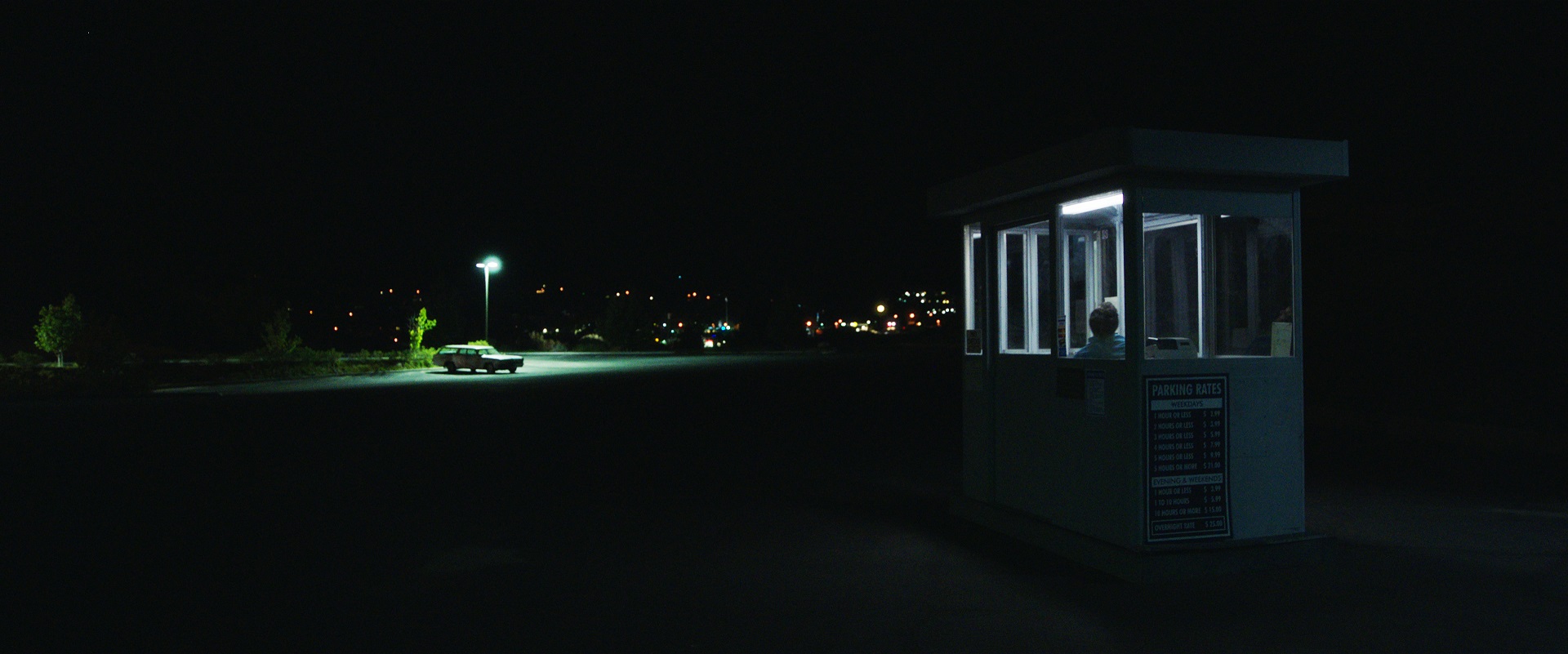
A still from Chase’s 2017 short Larry – inspired by the director’s haunted house costume
It’s all storytelling. It’s all about telling a story that makes you feel something, in a short amount of time. Whether it makes you feel the sort of fear that the parking lot attendant is going through in Larry, or the heartbreak that the couple is going through in Amy. It’s all just drawing on making people feel something.
What I found fascinating as well, apart from where I see your references, like Spielberg or Zemeckis, but also in your short film work: you don’t waste any time going into the film. Within five minutes, we already know what’s going on, and about the Larry creature. And for the rest of the 90-minute film, there’s not an ounce of fat to the narrative. Was short filmmaking a part of creating your ability to see what’s necessary in storytelling and filmmaking?
That’s a good question. It’s probably because I think the best short films are as short as possible. No one wants to watch a 20-minute short film, unfortunately. There are some great 20-minute short films, and I made some 20 or 30-minute short films in college. It’s just the reality of where we are as a society, we want to pass around short things to each other. We want to consume things quickly.
“You want to give the necessary information, that’s enough for people to feel something. That’s all that this is about.”
So, I think that is a skill that I honed in making short stuff. But I will also say that it probably came from my editing background more than anything. I was editing features and all sorts of stuff for years and you get really good because you’re not as precious about the stuff. You get really good at being like, “Let’s cut all this, let’s cut this. We don’t need it. Get to it, get to the emotion.” Not because you want people to just get through a movie faster, but because you don’t ever want to bore anybody. You want to give the necessary information, that’s enough for people to feel something. That’s all that this is about.
If you have a sequence that just isn’t making people feel something, that isn’t pushing character motivation forward, then lose it. In this movie, there’s plenty of stuff that we shot that I cut, and some of it was hard to cut. There’s a whole subplot: a wonderful actress, who was in the movie for many scenes, got cut entirely because it just didn’t need to be in the movie. It didn’t make you feel any more than I needed you to feel.
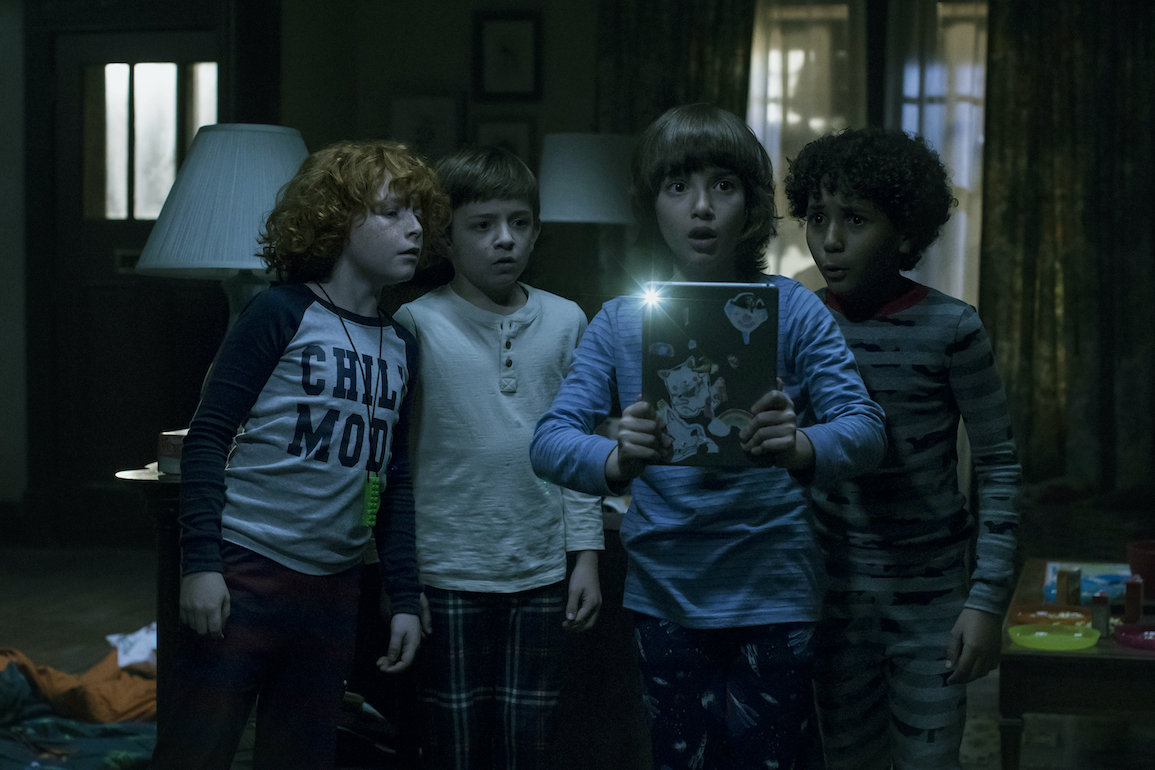
(L to R) Gavin Maciver-Wright as “Zach”, Winslow Fegley as “Byron”, Azhy Robertson as “Oliver”, and Jayden Marine as “Mateo” in writer/director Jacob Chase’s COME PLAY. Credit : Jasper Savage / Amblin Partners / Focus Features
You mentioned Marriage Story before, had you cast Ahzy Robertson before Marriage Story, or was that one of the reasons why you went with him?
I hadn’t seen Marriage Story, he shot it right before we shot our film, but I hadn’t seen it yet. When I turned in the first draft of the script, Steven Spielberg read it and he sent me a video of an audition from Azhy Robertson for another movie and he was like, “You’ve really got to consider this kid for this role of Oliver, he’d be amazing.” And I was like, “Who am I to say no to Steven Spielberg? Of course.”
Also, the audition tape was absolutely incredible. This young kid was amazing. I still saw hundreds and hundreds of kids for this role, but it just kept coming back to Azhy. He says so much with saying so little. For a character who’s non-verbal, he had to be able to communicate so much with his eyes and he’s just so in touch with his emotions and his imagination. I really can’t imagine the movie without him at this point.
Right. All of the performances are amazing, from Gillian Jacobs and John Gallagher, Jr. as well. And especially with Gillian Jacobs, I’m just such a huge fan of her work and her versatility. But still, with Come Play, it was a role that I’ve never seen her in before.

Azhy Robertson (left) stars as “Oliver” and Gillian Jacobs (right) stars as “Sarah” in writer/director Jacob Chase’s COME PLAY, a Focus Features release. Credit : Jasper Savage / Amblin Partners / Focus Features
On Amy, you worked with Alex Karpovsky and Troian Bellisario, who like Gillian and John are well-known for their TV work. What did you learn from Amy that you were able to use in Come Play, especially in terms of working with actors?
I think you learn something every time you work with actors, whether they’re well-known actors or not, everyone just has a different way of working. I think every time you get on set with somebody new, you’re trying to find the language that they like to work within. The job of the director is to just make everybody as comfortable as possible on set, so they feel they can just disappear into these roles and these moments. It was really just talking to them like they’re people, because they are.
Earlier, when I was in college and making shorts, I would probably get nervous talking to actors, but at some point I realized like, oh, they’re just people and they just want to be talked to about what’s going on. I’m not someone that likes to trick an actor into doing something, you just talk to them about what you’re looking for and what the scene is and hopefully, if it’s well written they can understand the character within the scene and just play it naturally.
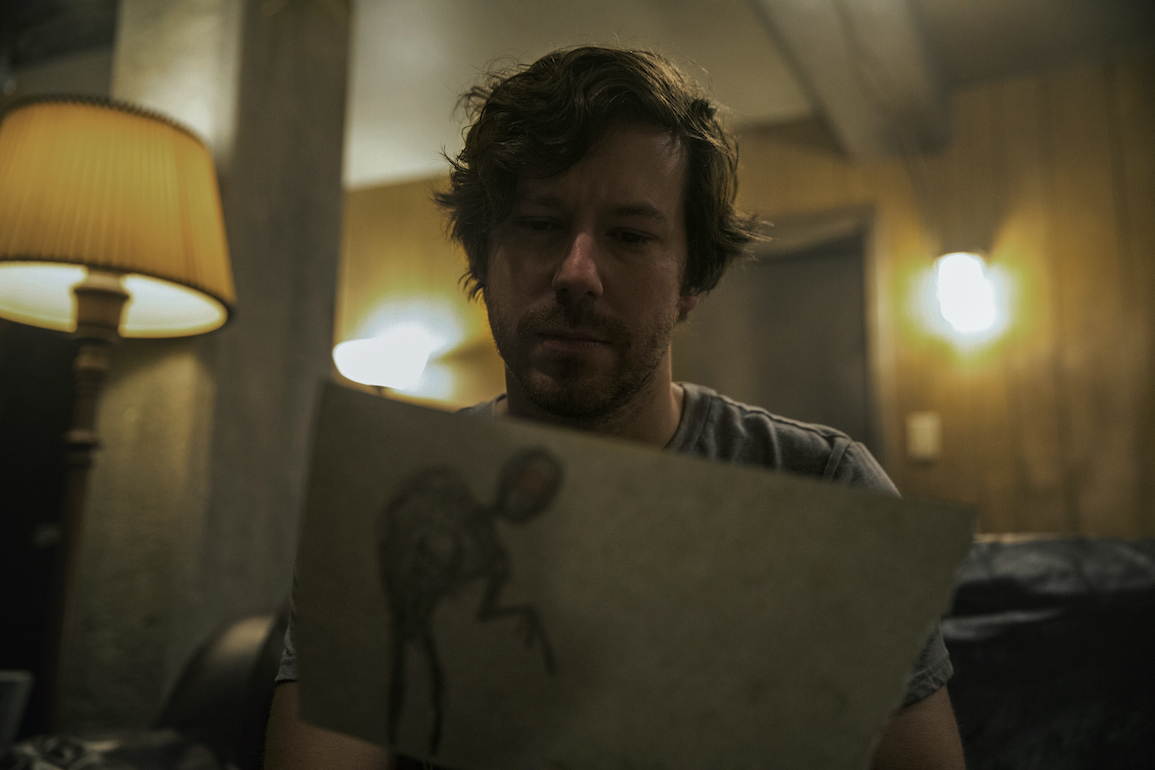
John Gallagher Jr. as “Marty” in writer/director Jacob Chase’s COME PLAY. Credit : Jasper Savage / Amblin Partners / Focus Features
Even between John and Gillian, they had very different ways of working and I mean, they were awesome together. Everyone was a family, but John is someone who doesn’t like to think about the shots, or ever see himself, that’s just his thing and so creating an environment where he can just disappear into the moments, that was what worked for him.
Whereas Gillian has aspirations of being a director herself. She’s directed some awesome short films and she’s super talented in that regard also. So she loved knowing all the complicated shots I was trying to set up, and these cool long blocking moments and she’d sit by the monitor and just watch. So two different ways of how people are working, but together it was just having a conversation.
There was a small detail in the credits that I found really nice, where it says something along the line of “the film was based on the short film Larry by Jacob Chase“. Were you adamant about adding that to the credits? Do you have a special connection to the short itself, to Larry, where it all originated?
I’m pretty sure that it contractually has to be in the credits, because they bought the short film and I wrote the script based on that short, which I also wrote. So the credit aside, of course I have a huge amount of love for that short film, although I see all the flaws in it, I can also watch it and like it as well. I learned a ton from it and I got to work with my friends.
Also in the credits, in the special thanks, it says, “Keith Schwalenberg, a true friend”. Keith was one of my best friends and he actually passed away between the time I made the short film and right after I finished shooting the feature. He had produced the short film with me and he had produced every short film I ever made, so I have a special connection to that being the last thing we made together. It feels especially sort of important.
“That’s the dream, right? To help all the people that helped you”
On that note, did you bring a lot of the people with whom you worked with on the shorts, to the feature?
Not as many as I would’ve liked to. When you make a jump to a bigger budget movie, not that this was a huge budget by any means, but you got to surround yourself with people that the studio really trusts. Especially because they’re taking a big chance on me, to put their faith in me to write and direct this movie, and spend all this money on it.
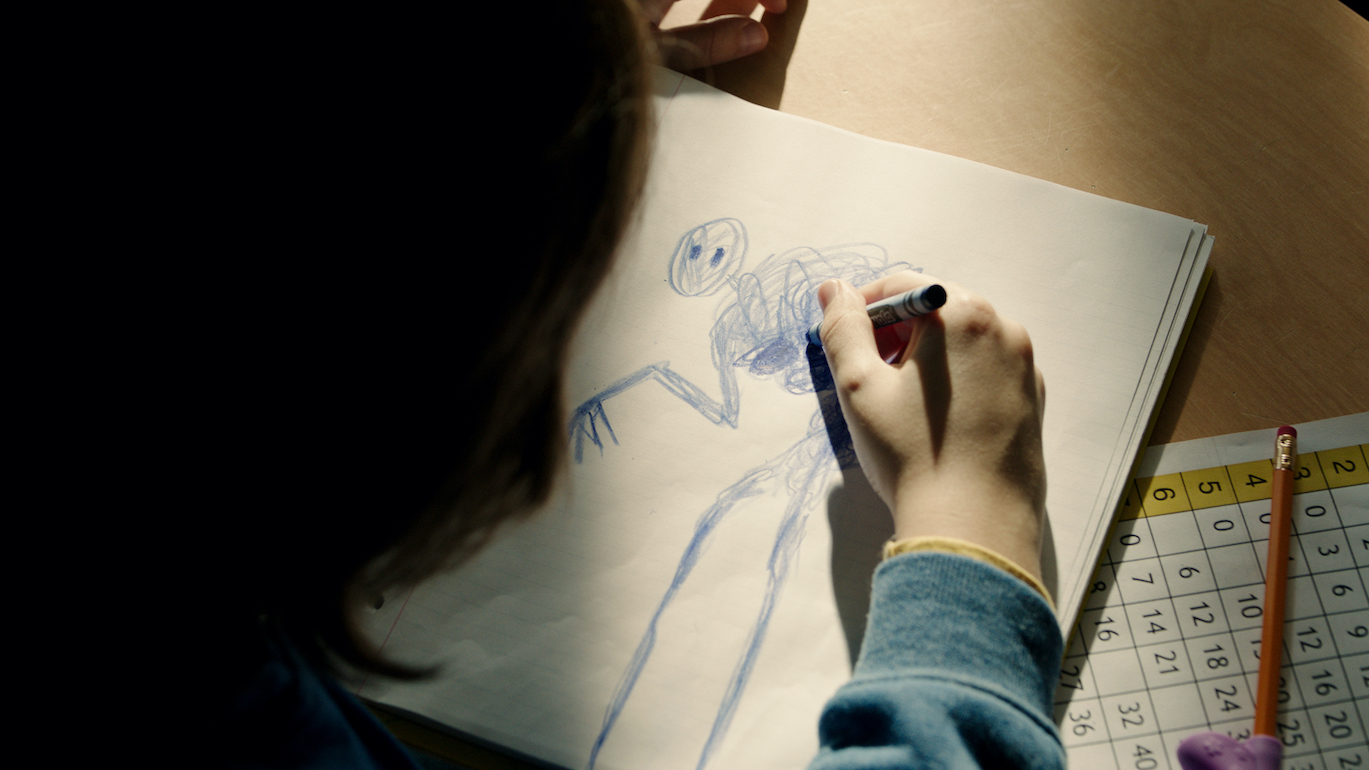
COME PLAY by writer/director Jacob Chase. Credit : Jasper Savage / Amblin Partners / Focus Features
I hope in the future I can bring more of my friends along on the journey and certainly I tried to get some more people onboard. I will say that the one person I was able to really include was Sarah Ferber, who was the artist who made the storybook and drew the storybook in the short film. She drew all the artwork in the feature as well. She did such an incredible job, and she’s an amazing artist, I was really happy to at least be able to include her.
Hopefully, I get the opportunity to make more films and then slowly I can keep bringing all my friends with me. I mean, that’s the dream, right? To help all the people that helped you.
Yeah, definitely. My last question will circle back to the first one in a way, because it’s safe to say that you’ve now made the next step in your career and as you said, it’s a big opportunity for you. So for short filmmakers, trying to emulate your career, what advice would you give them?
I think any advice is about every person’s individual story, and everyone’s story is going to be different. I will say, I have a lot of friends who have also had a lot of success making movies in various professions, whether they’re a DP, getting to DP bigger films, or a writer getting to write bigger films. The thing they all have in common, and that I try to emulate, is that they just work really hard.
“This industry is a numbers game.”
I know that maybe it sounds trite, but I think even myself, earlier in my life, in my twenties or whatever, I used to think, “Why am I not getting these shots? I’m so good, I’m talented, I can do it.” Looking back, I think ultimately I wasn’t creating enough. I wasn’t buying enough tickets to the lottery, if you will. This industry is a numbers game. Larry, the short film is, I don’t even know, the 20th short film I’ve made over the years and some of the other ones got me different meetings or would get me in the door.
Amy was definitely popular and got me some writing work, but it took a long time. Of course, there’s always going to be these big, crazy success stories of people that were 20 when they made their first huge Hollywood movie, but that’s not the reality for most people. The people to admire, are those that just work really hard, that are working consistently, and that keep trying to get better at their own craft. That’s really all you can do, people rise together, you help each other, you help your friends, and they will help you and just keep getting better.
Did you have a specific moment where you had this realization that you had to do more? Because I’m surprised by your answer, from reading your biography, all the things you did – the commercials, the shorts, the various scripts – at what point did you think, now I’m just going with it and doing everything I can?
The real answer is that I made an indie movie that most people haven’t seen, called The Four Faced Liar, that came out in 2010. It was a very small release, it didn’t go to theaters and it was one of the first streaming movies on Netflix. It’s on iTunes or whatever now. We made it for a couple hundred thousand dollars. So very small.
I was in my early twenties when that came out, and I remember thinking, “I’ve made it, here we go. I made a movie, I’m going to make another one, I’m going to be set.” I was just waiting for a while, for the opportunities to come to me. I saw the writer of that film and she’d just kept writing, so much more than I was creating and then she got staffed before me, or she got an agent before me. Then I realized that I need to be doing more, so I can just grow in this industry. I can’t wait for stuff to come to me.
“The only reason I got the opportunity to write and direct this movie is because Amblin was able to call all these other studios I’ve worked with.”
That stuff that you’re seeing in my biography, that’s all after I had that realization. That stuff in the last ten years, when I had that realization, it still took another ten years to get this movie made. I wrote countless scripts for spec that eventually turned into paid writing jobs, doing rewrites and the studio jobs, and eventually working with some amazing directors. And then selling TV shows, all this work was slowly building up my confidence, and my abilities, and other people’s confidence in me.
The only reason I got the opportunity to write and direct this movie is because Amblin was able to call all these other studios I’ve worked with, and know I turn in scripts in time, for example. And I have all this other material that people really like, that has gotten other actors attached in meaningful ways.
So it took a long time, but hopefully the next one doesn’t take this long to get made. But either way, I’m going to keep just working as hard as I can, to keep making stuff.
I’m positive. And here we are, so enjoy the moment.
Thank you.
Some parts of the interview have been edited for brevity and clarity.
Thank you to S/W team member Serafima Serafimova for her portrait of Jacob Chase.
Special thanks to Danielle Barbarin from Focus Features for setting up the interview.
 Georg Csarmann
Georg Csarmann